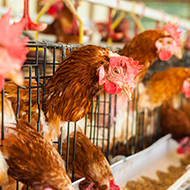Urban light pollution linked to smaller eyes in birds
The northern cardinal's eyes were five per cent smaller if they lived in the city.
A study has suggested that the lights in cities may have resulted in some birds evolving to have smaller eyes.
The researchers, from Washington State University, discovered that some birds living year round in the urban setting of San Antonio, Texas, had eyes that were smaller than those in the less bright outskirts.
The investigation involved them studying more than 500 birds from central and edge areas of San Antonio, a major city in Texas. The researchers compared the body and eye sizes of the birds, and analysed noise and light measurements during night and day in each area.
Two songbird species, the northern cardinal and the Carolina wren, had eyes that were five per cent smaller if they lived year-round in the city, compared to members of the same species in the outskirts.
However they found no eye-size difference between the two species of migratory bird, the painting bunting and the white-eyed vireo, no matter where in the city they predominantly lived.
This may suggest that residential birds are adapting to the brighter lights of urban areas, while the time migratory birds stay away from these places means that they have not. This could make it challenging when they return to these areas to breed.
Developing smaller eyes over time may be helping the birds to deal with the brighter, constant light of city environments, whereas birds with larger eyes could be somewhat blinded or struggle to sleep.
This is the first known study to show a connection between eye size and a bird’s ability to cope with sensory pollutants as part of city life.
Todd Jones, the study’s first author, said: “Humans may have some unintended consequences on birds that we don’t realise,
“We don’t know if these adaptations could have good or bad consequences for the birds down the road, considering that urban environments aren’t going away anytime soon. It is also important to understand how to manage such environments for the birds that maybe aren't urban adapted.”
The full study can be found in the journal Global Change Biology.
Image © Shutterstock



 An Avian Influenza Prevention Zone (AIPZ) has been introduced across Wales.
An Avian Influenza Prevention Zone (AIPZ) has been introduced across Wales.